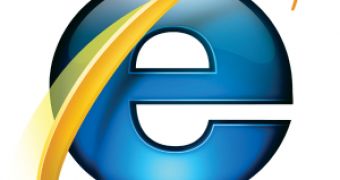Internet Explorer 8 was officially confirmed back in 2006 as the successor of Internet Explorer 7. Microsoft was a little late with the announcement that it would go straight to IE8 from IE7 and would not make available an interim release such as Internet Explore 7.5. With the first beta for IE8 planned by mid 2008, and with the Redmond company gearing up for MIX08 this March, the upcoming iteration of the Internet Explorer browser has got a tad more play beginning with December 2007. There is little doubt that Internet Explorer 8 is the future, judging strictly from a Microsoft centric perspective, but with IE having a market share of over 75% worldwide, it is also clear that IE8 will impact the entire world wide web.
Last month, Microsoft announced the culmination of CSS 2.1 support in IE8 with the rendering of the Acid2 test accurately. This milestone in the development of IE8 puts the browser on par with alternative products, such as Safari, iCab, Konqueror, Opera and Firefox 3.0 Beta, in terms of standards support. The Redmond company is essentially building on top of the standards support advancements in IE7, in order to deliver only a superficial impact to current web content, courtesy of the "Don't Break the Web" rule cited by Chris Wilson, IE Platform Architect.
"Progress always comes at a cost. In the case of web browsers, users bear the cost when developers take the rendering of certain authoring tools and browsers (especially Internet Explorer) as gospel. When a new version of that browser comes along and fixes bugs or misinterpretations of the spec (or introduces new ones) or in any way changes behavior, sites break and our clients, bosses, and users get very unhappy," revealed Aaron Gustafson, one of the members of the WaSP-Microsoft Task Force.
Microsoft has worked closely with the Web Standards Project (in the WaSP-Microsoft Task Force) in order to ensure that IE8 will not affect the websites currently into existence. Both Wilson and Gustafson assured developers that IE8 would not be a repeat of IE7 and the broken DOCTYPE switch. Namely, IE8 will behave the same way as IE7, ensuring complete backward compatibility, which was not the case with IE7 and IE6.
"Throughout the development of the new engine, the IE team has been mindful of the backlash they received upon the release of IE7. Some standards zealots and even a few Microsoft fans felt that they didn't go far enough in IE7 with bug fixes and improvements to CSS support. But a far greater number of developers gasped in utter disbelief as their websites, which looked great in IE6, broke in IE7," Gustafson stated.
The truth is that the imminent advent of IE8 was bound to create issues with the functionality of documents created via the IE7 rendering engine. Throughout 2007, Microsoft's work with the development of IE8 was focused almost exclusively on ensuring advanced standard support, as well as backwards compatibility.
"For many years, we designers and developers have been yearning for a way to reliably deploy our websites. In addition to the headaches of writing cross-platform styles and scripts, we've had to deal with the fallout from new browser releases that inevitably broke something we couldn't possibly have anticipated. It's never fun explaining the cause of an unexpected break to our clients, bosses, and users. But with IE8's introduction of version targeting, there is a light at the end of the tunnel. I, for one, hope other browser vendors join Microsoft in implementing this functionality," Gustafson concluded.

 14 DAY TRIAL //
14 DAY TRIAL //